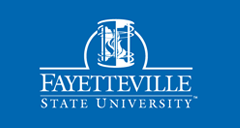Abstract
The COVID-19 pandemic has strained higher education institutions, especially small Historically Black Colleges and Universities (HBCUs). As campuses closed and reopened, Black communities' digital divide grew, adding to the need to stay connected. This study uses social capital to examine how institutions use language, tone, content, and information to bridge social capital. An analysis of 35 small liberal arts HBCUs’ Instagram posts was undertaken to compare post frequency, types of information, engagement, tone, language, and content in 2019 before the COVID-19 pandemic and during the pandemic, 2020 and 2021. This study indicates that post-oversaturation in 2020 and 2021 and information type may factor into post-engagement from stakeholders. Using a casual tone, language not using "your" terminology, and content without graphics has more engagement. More comments in 2020 and 2021 indicate that stakeholders may have sought to bridge social capital.
Recommended Citation
Peters, Pamela
(2023)
"Small Historically Black Colleges and Universities Bridging Social Capital: The Use of Language, Tone and Content to Share Information on Instagram,"
Journal of Research Initiatives: Vol. 8:
Iss.
1, Article 1.
Available at:
https://digitalcommons.uncfsu.edu/jri/vol8/iss1/1
Included in
Adult and Continuing Education Commons, African American Studies Commons, Communication Technology and New Media Commons, Digital Humanities Commons, Disability and Equity in Education Commons, Gender, Race, Sexuality, and Ethnicity in Communication Commons, Higher Education Commons, Higher Education Administration Commons, Journalism Studies Commons, Mass Communication Commons, Online and Distance Education Commons, Social Media Commons
